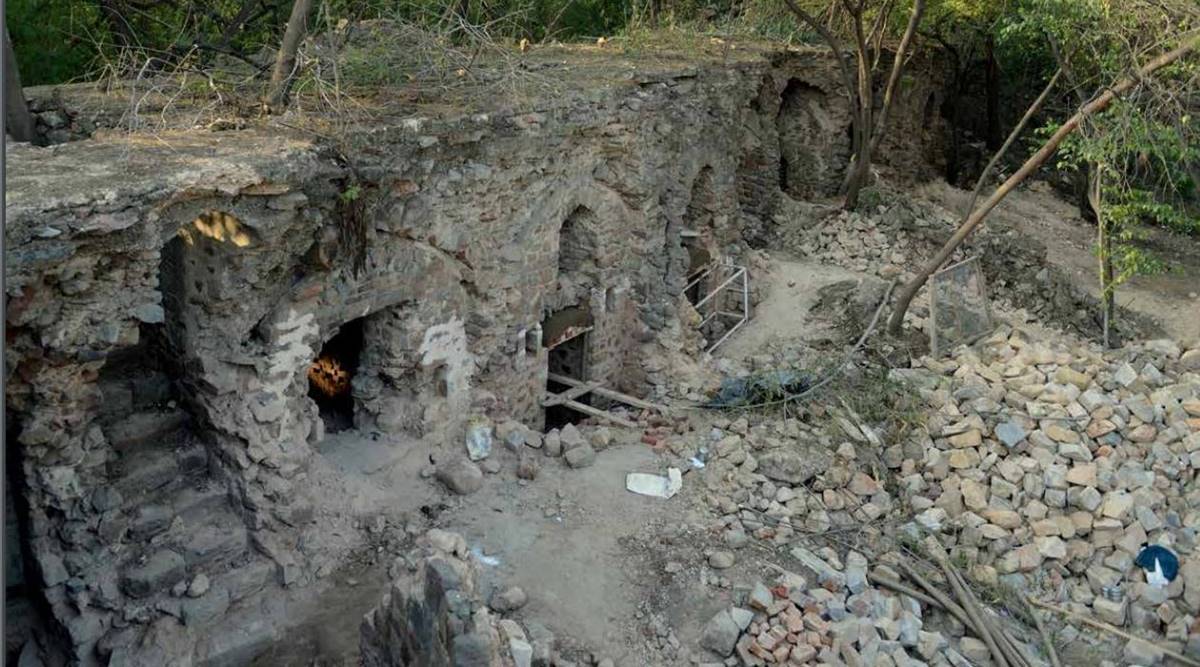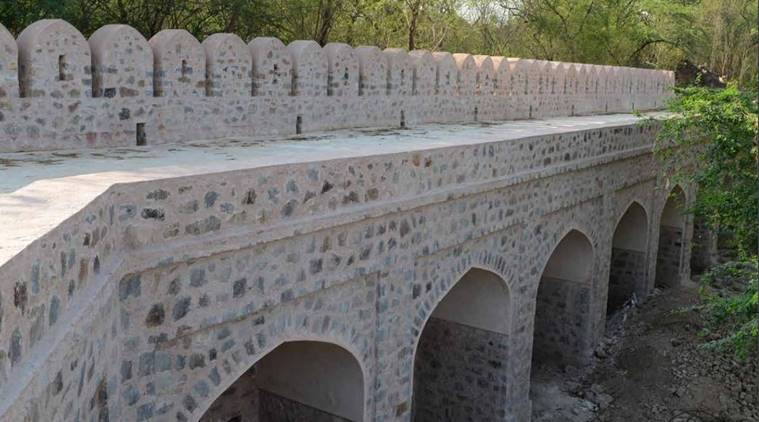Inordinate delay in granting permission for removal of trees despite repeated written requests amounts to a “deliberate attempt” to imperil and destroy a protected monument, Delhi’s archaeological department head Vikas Maloo told the forest department in a letter on August 21.
There is an imminent danger of irreparable damage to a protected monument, the Azimganj Serai, built around the 15th or 16th Century and situated inside the Delhi zoo, if 85 trees growing over its archaeological remains are not removed, the forest department has been told.
Inordinate delay in granting permission for removal of trees despite repeated written requests amounts to a “deliberate attempt” to imperil and destroy a protected monument, Delhi’s archaeological department head Vikas Maloo told the forest department in a letter on August 21.
“It is once again brought to your notice that the protected monument has already suffered a great deal of damage due to the inordinate delay in the removal of the unnatural outgrowth of trees on its structure and abutting it,” read the letter sent to the Deputy Conservator of Forests (DCF), South division.
The serai was once an inn that served travellers who used the Grand Trunk Road, said to be one of the oldest roads that connected Central Asia to India. The fort-like structure, with 108 rooms and a large courtyard measuring about 10,000 sq metres, was the grandest serai in the area.
About 50% of the serai, including its standing portions, was restored by the Aga Khan Trust for Culture (AKTC) in 2017, after it signed a Memorandum of Understanding (MoU) in 2013 with the Delhi government’s archaeology department under which the monument falls.
Manisha Saxena, secretary of Delhi’s Art, Culture and Language department, said a second MoU is in the process of being signed with the AKTC for phase II of the restoration work. “We will consider opening the monument for public after completion of conservation work and after consultation with all stakeholders,” said Saxena.
However, after an inspection, the forest department declared in April that the project site was in a ‘deemed forest’ area, and asked the archaeology department to submit an application for diversion of forest land for non-forestry purpose.
An area having 250 trees per hectare is considered as a deemed forest in Delhi and permission for non-forest activity in such an area needs to be sought from the Environment Ministry under Forest Conservation Act 1980.
Maloo’s letter to the DCF, South, states that the forest department has previously, in 2015, granted permission for cutting of trees growing on and abutting the monument for conservation work and had also stated at the time that further permissions would be granted as required.
“It is surprising how the forest department did not ascertain this (deemed forest) fact earlier and continued to communicate in this respect without taking the same into consideration,” the letter states.
Officials involved with the restoration project stated that the trees that need to be removed are mainly vilayati kikar and subabool — two invasive tree species — and that permission for their removal is pending with the forest department since 2015. Officials also said that they would plant 10 trees for each one removed from the site as compensatory plantation.
A forest department official, however, said, “There is no such application under consideration now.” The principal chief conservator of forests, Ishwar Singh, did not respond to queries.
Zoo authorities have raised concerns in the past about a possible disturbance to animals from opening the monument to public. Zoo director Ramesh Pandey did not respond to queries from The Indian Express on Friday.
Gauri Maulekhi, an animal rights activist, said the monument lies close to the elephant and jackal enclosures at the zoo, and public presence at the monument would disturb them.
She added, “You also can’t cut so many trees to restore an ancient ruin at the cost of our lives as Delhi breathes in the here-and-now.”
Source: Read Full Article



